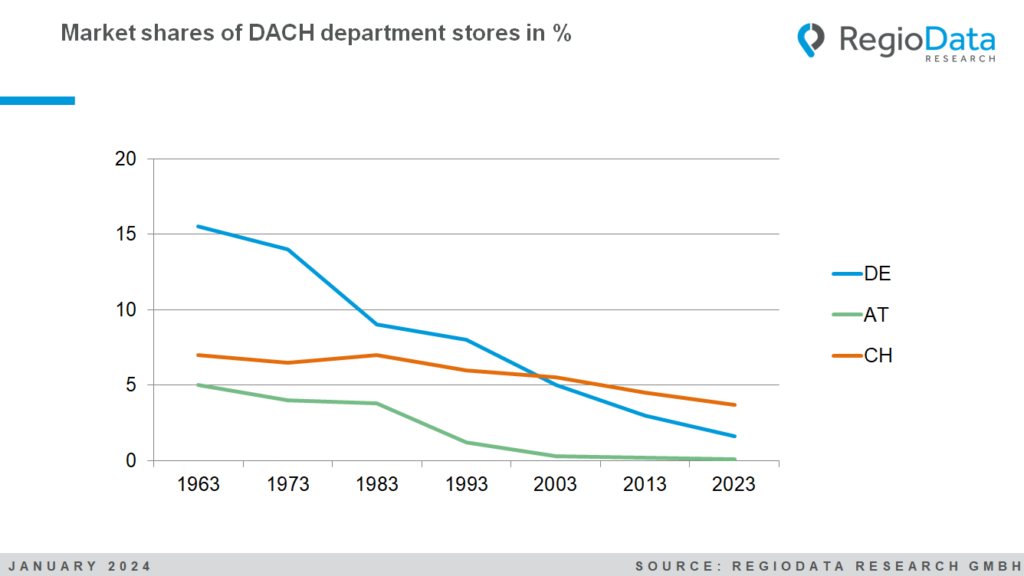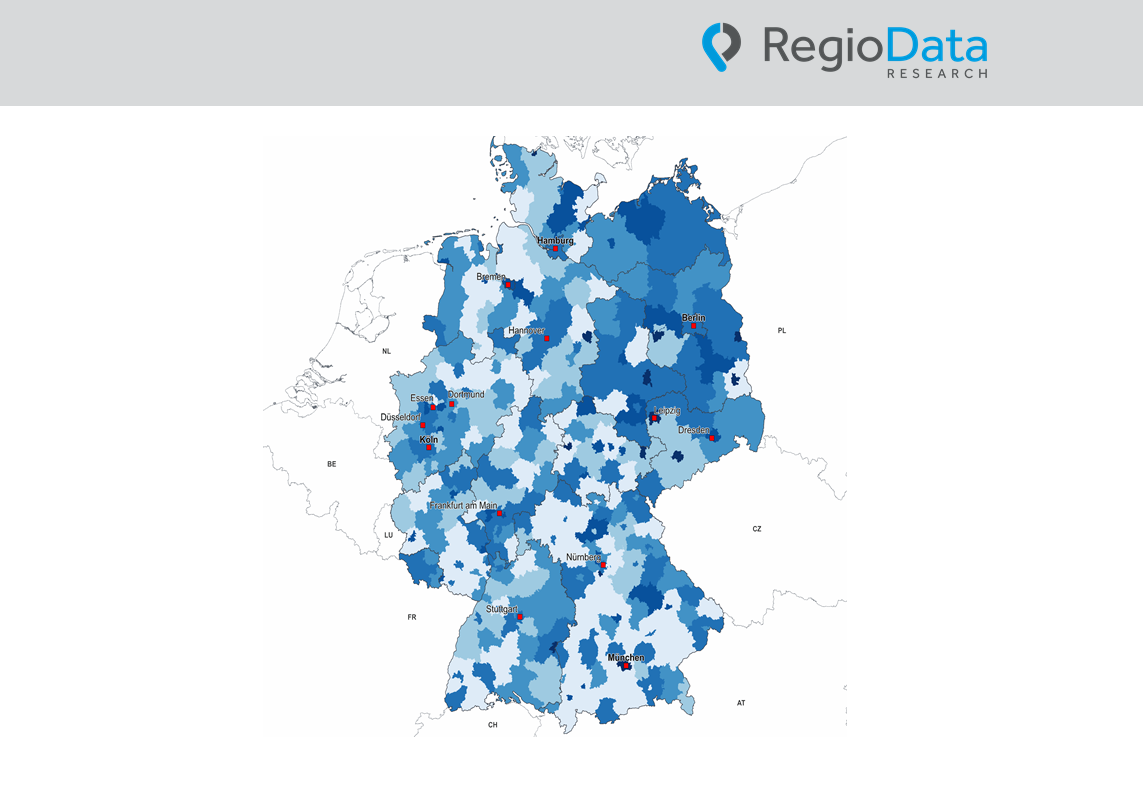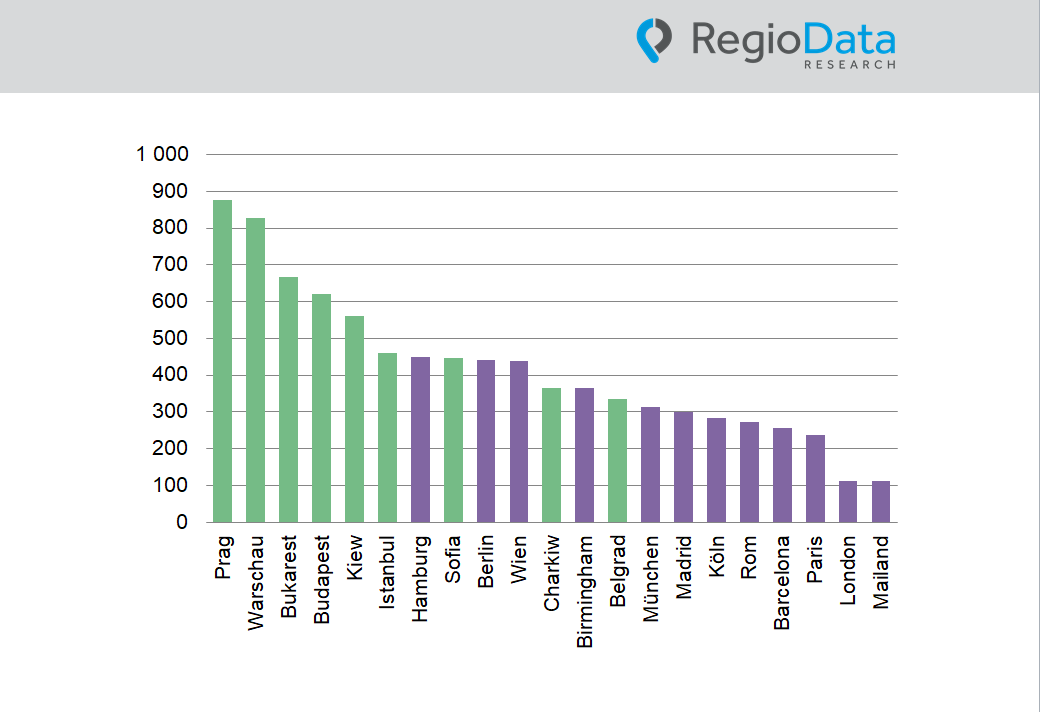Europe
Department Stores: Outdated Model for 50 Years
About 150 years ago, department stores were distinguished by their uniqueness – whether through their selection, luxury, novelty, or ambiance. Over time, this type of business has almost completely lost its unique selling proposition (USP), and only a few have managed to preserve this character until today. Examples include Harrods and Liberty in London, the Galleries Lafayette and Au Printemps in Paris, KaDeWe in Berlin, and La Rinascente in Milan.
In the 1960s, department stores experienced their heyday, reaching market shares of over 15% of total retail sales in some countries, with Germany being one of the leading players. However, in Austria and Switzerland, the “classic department store” could never achieve comparable significance.
From the 1970s onwards, large-scale specialists emerged in various industries, followed by the development of shopping malls. Conventional department stores struggled to keep up with this trend, and their decline began. Individual closures, mergers, transformations into shopping malls, as well as an increasing number of acquisitions or bankruptcies, characterized this period. Smaller department store chains have almost disappeared from the scene today, while large European department store giants like El Corte Inglés, Marks & Spencer, and Coin can only sustain their revenues through acquisitions and expansion into distant countries.
In Austria, apart from Kastner & Öhler, there are hardly any classic department stores left. In Switzerland, Manor and Coop-City are two relatively stable market participants of significance. However, no country has experienced such a drastic decline in the importance of department stores as Germany. After numerous turbulences, the current situation, especially concerning Galeria, still appears highly volatile.
Given the current trends in shopping behavior, many indications suggest that there will likely be further closures in most countries. Only a few “beacons” are likely to remain, preserving their originally unique characteristics of luxury, ambiance, and image: Harrods, Galeries Lafayette & Co.
The developments in retail, especially in the department store sector, highlight the dynamic nature of the market and the challenges traditional business models face.
Share post




